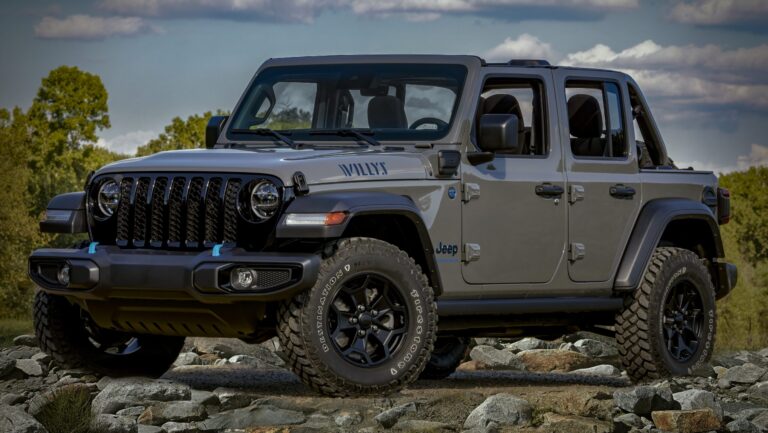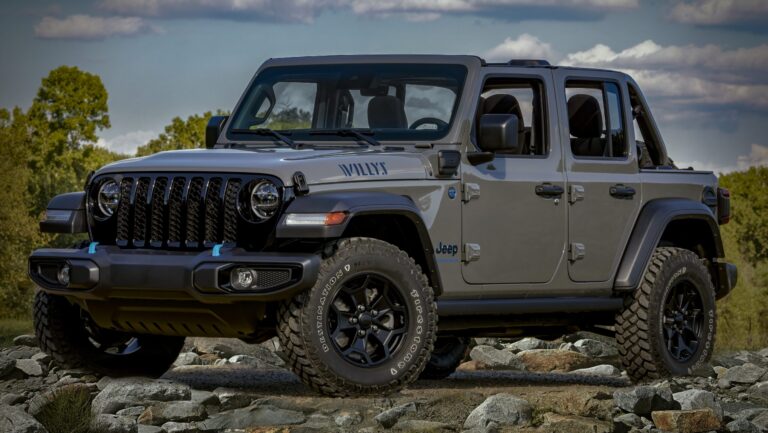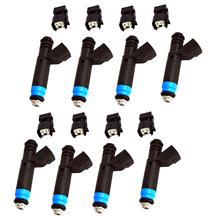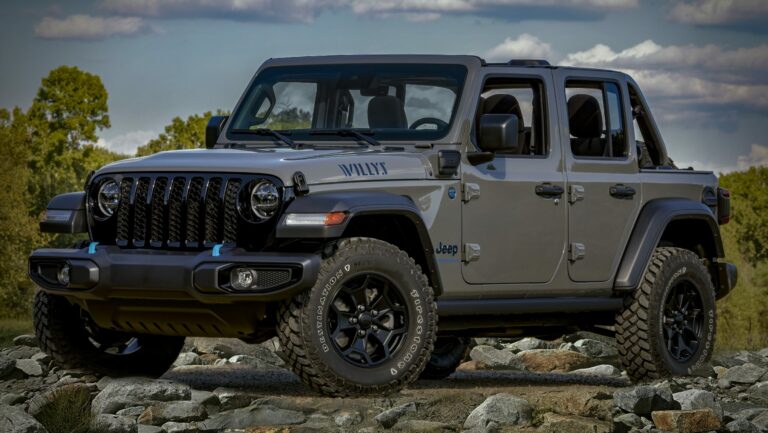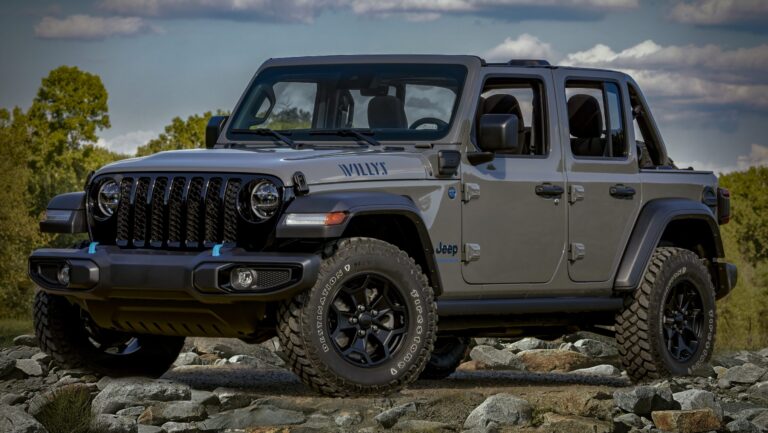Jeep YJ Rims For Sale: A Comprehensive Buyer’s Guide
Jeep YJ Rims For Sale: A Comprehensive Buyer’s Guide jeeps.truckstrend.com
The Jeep YJ Wrangler, produced from 1987 to 1995, holds a unique and revered place in the hearts of off-road enthusiasts and classic Jeep aficionados alike. With its iconic square headlights and robust leaf-spring suspension, the YJ embodies the rugged spirit of the Wrangler lineage. While often overlooked for its newer JK and JL siblings, the YJ remains an incredibly capable and customizable platform. A critical component in both its aesthetic appeal and off-road performance is its wheels, or "rims." Whether you’re looking to refresh the look of your classic YJ, accommodate larger tires for serious trail duty, or simply replace a damaged set, navigating the world of Jeep YJ rims for sale requires a clear understanding of your options and needs. This comprehensive guide will delve into everything you need to know about finding, selecting, and maintaining the perfect rims for your beloved Jeep YJ.
Understanding Your Jeep YJ: A Quick Overview
Jeep YJ Rims For Sale: A Comprehensive Buyer’s Guide
Before diving into the specifics of rims, it’s essential to grasp a few fundamental characteristics of the Jeep YJ. Manufactured over eight years, the YJ introduced several innovations while retaining the core Wrangler DNA. Its most distinctive visual feature, the rectangular headlights, set it apart from all other Wrangler generations. More importantly for our discussion, the YJ utilizes a specific wheel bolt pattern that is crucial for compatibility.
Key YJ Wheel Specifications:
- Production Years: 1987-1995
- Stock Bolt Pattern: 5×4.5 inches (or 5×114.3mm) – This is arguably the most critical piece of information when searching for YJ rims. Any rim you consider must have this bolt pattern.
- Stock Wheel Sizes: Typically 15×7 or 15×8 inches.
Understanding these basics will prevent costly mistakes and ensure you’re looking at compatible options from the outset.

Why Upgrade or Replace Your YJ Rims?
The decision to seek out Jeep YJ rims for sale often stems from several motivations, each with its own set of benefits:
- Aesthetics and Personalization: The quickest way to transform the look of your YJ is by changing its wheels. From classic chrome to aggressive black, and from multi-spoke designs to simple D-windows, a new set of rims can dramatically alter your Jeep’s character, making it truly yours.
- Performance Enhancement:
- Accommodating Larger Tires: If you’re installing a lift kit and planning to run bigger tires (e.g., 33-inch, 35-inch, or even larger), your stock rims likely won’t provide the necessary clearance or ideal backspacing. Aftermarket rims are designed to push tires further out, preventing rubbing against suspension components or fender flares.
- Improved Off-Road Capability: Specific rim designs, such as those with less backspacing or true beadlock wheels, are engineered to enhance off-road performance by providing a wider stance, better tire articulation, and the ability to run extremely low tire pressures without tire bead separation.
- Weight Reduction: Alloy wheels are significantly lighter than steel wheels. Reducing unsprung weight can lead to minor improvements in ride quality, braking, and fuel efficiency, though this is often a secondary consideration for a YJ.
- Durability: Stock rims, especially older ones, may not withstand the rigors of aggressive off-roading. Aftermarket rims are often built stronger to endure rocks, roots, and challenging terrain.
- Replacement Due to Damage or Wear: Over decades, stock rims can suffer from corrosion, bends, cracks, or significant aesthetic wear. Replacing them is often a necessity for safety, performance, and appearance.
Key Considerations When Buying Jeep YJ Rims
Purchasing new or used rims for your YJ isn’t as simple as picking a cool design. Several technical specifications and practical factors must be carefully considered:
1. Bolt Pattern: The Non-Negotiable
As mentioned, the Jeep YJ uses a 5×4.5 inch (5×114.3mm) bolt pattern. This means there are five lug holes, spaced on a 4.5-inch diameter circle. Any rim you buy must match this pattern. Attempting to force a different pattern will either not work or create an extremely dangerous situation.
2. Diameter (Inches): 15", 16", 17" and Beyond
- 15-inch: The most common and often preferred size for YJs. They allow for a greater tire sidewall, which provides more flex for off-roading (a larger "cushion" of air) and generally a more comfortable ride on pavement. 15-inch tires are also often more affordable.
- 16-inch & 17-inch: These sizes are becoming more popular due to the wider availability of larger tire sizes in these diameters. They can offer a slightly crisper on-road feel but reduce tire sidewall, which might compromise off-road articulation slightly. They may also be necessary if you’ve upgraded to larger brake calipers that require more inner wheel clearance.
- Larger Diameters (18"+): While possible, these are less common and generally not recommended for serious off-roading on a YJ as they significantly reduce tire sidewall, making the ride harsher and increasing the risk of rim damage.
3. Width (Inches): Matching Your Tires
Common YJ rim widths range from 7 inches to 10 inches. The width you choose should be appropriate for the tire size you plan to run. For example:
- 7-8 inches: Ideal for tires up to 12.5 inches wide.
- 8-9 inches: Good for 12.5-inch wide tires, providing a slightly wider stance.
- 10 inches: Best for very wide tires (13.5 inches or more) but can cause tires to "balloon" or rub if backspacing isn’t carefully managed.
Consult tire manufacturer recommendations for optimal rim width.
4. Backspacing and Offset: Crucial for Clearance and Stance
This is where many first-time buyers get confused, but it’s vital for proper fitment.
- Backspacing: The measurement from the mounting surface of the wheel to the back edge of the rim.
- Offset: The distance from the wheel’s mounting surface to the centerline of the wheel.
- Positive Offset: The mounting surface is closer to the outside of the wheel (tires tuck in more).
- Negative Offset: The mounting surface is closer to the inside of the wheel (tires stick out more).
Why it matters for YJs: Stock YJ wheels typically have a backspacing of around 5.25 inches. When upgrading to larger tires (especially 31 inches or more), you’ll almost certainly need less backspacing (or a more negative offset) to push the tire further away from the frame and suspension components, preventing rubbing at full turn or during articulation. Common aftermarket backspacing for YJs with larger tires is between 3.75 to 4.5 inches. Less backspacing means the wheels stick out further.
5. Material: Steel vs. Aluminum/Alloy
- Steel Wheels:
- Pros: Very durable, relatively inexpensive, easy to repair (can be hammered back into shape), good for rock crawling where impact is common.
- Cons: Heavy (increases unsprung weight), prone to rust, limited aesthetic options (often simple D-window or spoke designs).
- Aluminum/Alloy Wheels:
- Pros: Lighter (better ride, braking, fuel economy), excellent heat dissipation (good for brakes), vast array of designs and finishes, resistant to rust (though can corrode).
- Cons: More expensive, can crack or bend more easily than steel under severe impact, difficult or impossible to repair once damaged.
6. Finish: Appearance and Durability
Rims come in various finishes: polished aluminum, chrome, painted (black, gray, bronze), or machined. Consider:
- Aesthetics: What look are you going for?
- Durability: Chrome can chip and peel. Polished aluminum requires frequent cleaning. Powder-coated or painted finishes offer good durability but can scratch.
- Maintenance: How much effort are you willing to put into keeping them clean?
7. Intended Use: Daily Driver vs. Off-Road Beast
- Daily Driver/Light Trails: Most aftermarket alloy or steel wheels will suffice.
- Serious Rock Crawling/Mudding: You might consider beadlock wheels. True beadlocks physically clamp the tire bead to the rim, allowing you to run extremely low tire pressures (e.g., 5-8 psi) for maximum traction without fear of the tire coming off the bead. Be aware: True beadlock wheels are often not DOT-approved for street use and may be illegal on public roads in some areas. "Beadlock-capable" or "simulated beadlock" wheels offer the look without the functional (and legal) implications.
Types of Rims Available for Jeep YJ
The market for YJ rims is diverse, catering to all tastes and budgets:
- Stock/OEM Replacements: If you want to maintain an original factory look, you can sometimes find used OEM rims or aftermarket replicas.
- Aftermarket Steel Wheels: These are the workhorses of the off-road world. Common styles include "D-window" (circular holes) or "Soft 8" (eight circular holes). They are robust, affordable, and often come in black or white.
- Aftermarket Alloy Wheels: This category offers the most variety. Brands like Pro Comp, Mickey Thompson, American Racing, and Method Race Wheels offer countless designs, finishes, and specific backspacing options tailored for lifted Jeeps and larger tires.
- True Beadlock Wheels: As discussed, for extreme off-road use. Examples include designs from Hutchinson, Raceline, and Method.
Where to Find Jeep YJ Rims For Sale
The search for the perfect YJ rims can lead you to various sources:
New Rims:
- Online Off-Road Retailers: Websites like Quadratec, ExtremeTerrain, 4 Wheel Parts, Morris 4×4 Center, and Northridge4x4 specialize in Jeep parts and offer a wide selection of new rims with detailed specifications.
- Amazon & eBay: Can be good sources for new rims, often from third-party sellers. Be diligent about verifying specifications and seller reputation.
- Local Off-Road Shops: Many brick-and-mortar shops carry popular brands and can provide expert advice and installation services.
- Direct from Manufacturers: Some wheel manufacturers sell directly from their websites.
Used Rims:
Buying used can save you money, but requires careful inspection.
- Online Marketplaces: Facebook Marketplace, Craigslist, and local classifieds are excellent for finding used sets. Search specifically for "Jeep YJ wheels," "5×4.5 wheels," or "5×114.3 wheels."
- Jeep Forums & Enthusiast Groups: Dedicated YJ forums or local Jeep club groups on social media are great places to find parts being sold by fellow enthusiasts. They often know the history of the items.
- Local Salvage Yards/Junkyards: While less common for specialty aftermarket rims, you might find stock YJ wheels here.
- Swap Meets & Off-Road Events: Attend local Jeep jamborees or 4×4 swap meets, where you can often find great deals and inspect items in person.
Tips for Buying Used:
- Inspect Thoroughly: Check for bends, cracks, deep scratches, curb rash, or excessive corrosion. A bent rim can cause vibrations and be unsafe.
- Ask About History: Were they used for off-roading? Have they been repaired?
- Verify Bolt Pattern: Bring a tape measure or a lug nut to double-check.
- Check for Matching Set: Ensure all rims are the same size, backspacing, and condition.
Installation and Maintenance Tips
Once you’ve acquired your YJ rims, proper installation and maintenance are key to their longevity and your safety.
- Professional Installation: While capable DIYers can install wheels, having tires mounted and balanced by a professional is highly recommended. Proper balancing prevents vibrations and ensures even tire wear.
- Torque Specs: Always tighten lug nuts to the manufacturer’s specified torque. For YJs, this is typically around 80-100 ft-lbs. Use a torque wrench. Overtightening can stretch studs, and undertightening can cause wheels to come loose.
- Re-torque: After driving 50-100 miles on new wheels, re-torque your lug nuts.
- Cleaning and Care: Clean your rims regularly, especially after off-roading or exposure to salt. Use appropriate cleaners for your rim’s finish. Avoid harsh chemicals that can damage clear coats or polished surfaces.
- Rotation: Rotate your tires (and rims) every 5,000-7,000 miles to ensure even wear across all four (or five, if you include the spare) tires.
- Post-Off-Road Inspection: After hitting the trails, inspect your rims for any new damage, bends, or cracks.
Potential Challenges and Solutions
- Rubbing Issues: If your new tires rub against fenders or suspension components, the primary solution is often adjusting backspacing/offset. Other solutions include fender flares, minor trimming, or a larger lift kit.
- Tire Bead Seating: Some wheel designs can be tricky to get the tire bead to seat properly, especially with older tires. A professional tire shop will have the right equipment.
- Finding Specific Styles/Discontinued Rims: The used market requires patience. Set up alerts on marketplaces or frequent forums.
- Shipping Costs: Rims are bulky and heavy. Factor in significant shipping costs if buying online from a distant seller.
- Counterfeit Rims: Be wary of suspiciously low prices on new rims. Stick to reputable retailers and well-known brands to avoid counterfeit or low-quality products.
Price Table for Jeep YJ Rims For Sale
Please note: Prices are estimated and can vary significantly based on brand, condition, vendor, and current market demand. This table is for general guidance.
| Rim Type | Material | Diameter (in) | Width (in) | Condition | Estimated Price Range (Per Rim) | Notes |
|---|---|---|---|---|---|---|
| OEM Steel Wheel | Steel | 15 | 7-8 | Used | $25 – $75 | Basic replacement, often needs cleaning/paint. |
| Aftermarket Steel Wheel | Steel | 15-17 | 7-10 | New | $60 – $120 | D-window, Soft 8 styles. Durable, heavy, affordable. |
| Entry-Level Alloy Wheel | Aluminum | 15-17 | 7-9 | New | $100 – $180 | Common brands like Pro Comp, Cragar. Good balance of cost and aesthetics. |
| Mid-Range Alloy Wheel | Aluminum | 15-17 | 8-10 | New | $180 – $300 | Wider range of designs, better finishes. Popular for lifted Jeeps. |
| Premium Alloy Wheel | Aluminum | 16-17 | 8-10 | New | $300 – $500+ | High-end brands (Method, KMC, Fuel). Advanced designs, potentially lighter. |
| Used Aftermarket Alloy | Aluminum | 15-17 | 7-10 | Used | $50 – $150 | Price varies greatly by condition, brand, and damage. Inspect carefully. |
| True Beadlock Wheel | Aluminum | 15-17 | 8-10 | New | $350 – $600+ | For extreme off-roading. Often not street legal. Requires special tire mounting. |
Frequently Asked Questions (FAQ) about Jeep YJ Rims
Q1: What is the exact bolt pattern for a Jeep YJ?
A1: The Jeep YJ (1987-1995) uses a 5×4.5 inch, or 5×114.3mm, bolt pattern. This is critical for compatibility.
Q2: Can I put 17-inch rims on my stock Jeep YJ?
A2: Yes, you can fit 17-inch rims on a stock YJ, but the tire size you choose will be limited. You’ll need to select tires with a smaller overall diameter (e.g., 30 inches or less) to avoid rubbing without a lift. The primary benefit of 17-inch wheels is often tire availability for larger sizes once a lift is installed.
Q3: What is "backspacing" and why is it important for YJ rims?
A3: Backspacing is the distance from the mounting surface of the wheel to its rear edge. It’s crucial because it dictates how far your wheel and tire combo will stick out or tuck in relative to your suspension and fenders. For YJs, especially with larger tires, less backspacing (e.g., 3.75-4.5 inches) is often needed to prevent tires from rubbing on leaf springs or control arms during turns or articulation.
Q4: Are beadlock wheels street legal for a Jeep YJ?
A4: True beadlock wheels, designed to clamp the tire bead for extreme low-pressure off-roading, are generally not DOT-approved for street use and may be illegal on public roads in many jurisdictions. "Beadlock-capable" or "simulated beadlock" wheels offer the aggressive look without the functional clamping ring, making them street legal. Always check local laws.
Q5: How do I know if a used rim is in good condition?
A5: Thoroughly inspect used rims for:
- Bends or Dents: Especially on the lip or inner barrel.
- Cracks: Look closely around lug holes, spokes, and the inner barrel.
- Curb Rash/Scratches: Minor cosmetic damage is common, but deep gouges can indicate structural issues.
- Corrosion/Rust: Especially on steel wheels.
- True Roundness: If possible, spin the wheel (on a balancer or by hand) to check for wobbles or runout.
Q6: Should I choose steel or alloy rims for my YJ?
A6: It depends on your priorities:
- Steel: More durable against impact, cheaper, heavier, can rust, limited styles. Ideal for budget-conscious buyers or hardcore rock crawlers who anticipate rim damage.
- Alloy (Aluminum): Lighter, better aesthetics, more expensive, less repairable if severely damaged, better heat dissipation. Ideal for those prioritizing performance, aesthetics, and a smoother ride.
Conclusion
Choosing the right Jeep YJ rims for sale is a decision that significantly impacts your vehicle’s performance, safety, and visual appeal. By understanding the critical specifications like the 5×4.5-inch bolt pattern, considering diameter, width, and especially backspacing, and weighing the pros and cons of different materials and types, you can make an informed choice. Whether you’re restoring a classic, building an off-road beast, or simply replacing worn-out parts, the market offers a vast array of options. Take your time, do your research, and invest wisely to ensure your iconic Jeep YJ continues to turn heads and conquer trails for years to come. The perfect set of rims isn’t just an accessory; it’s an integral part of your YJ’s identity and capability.

